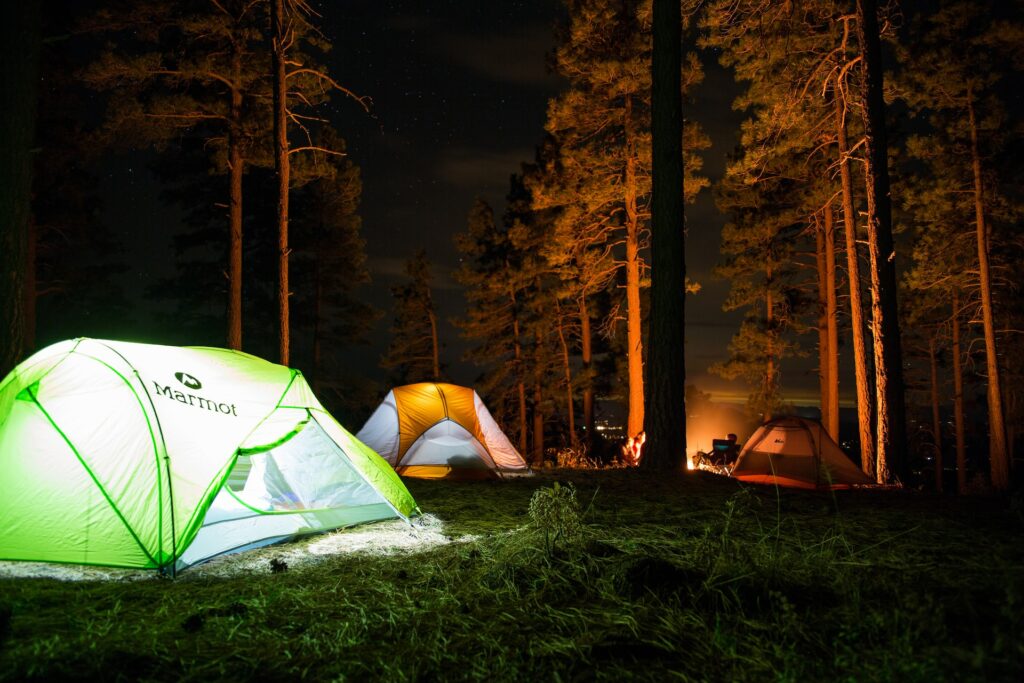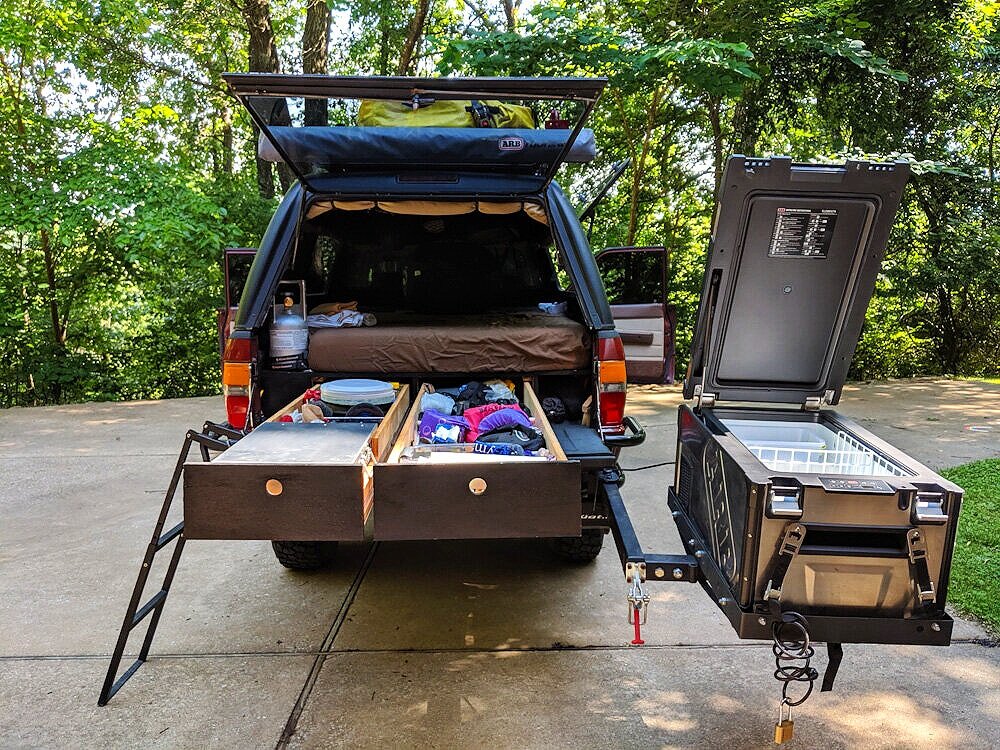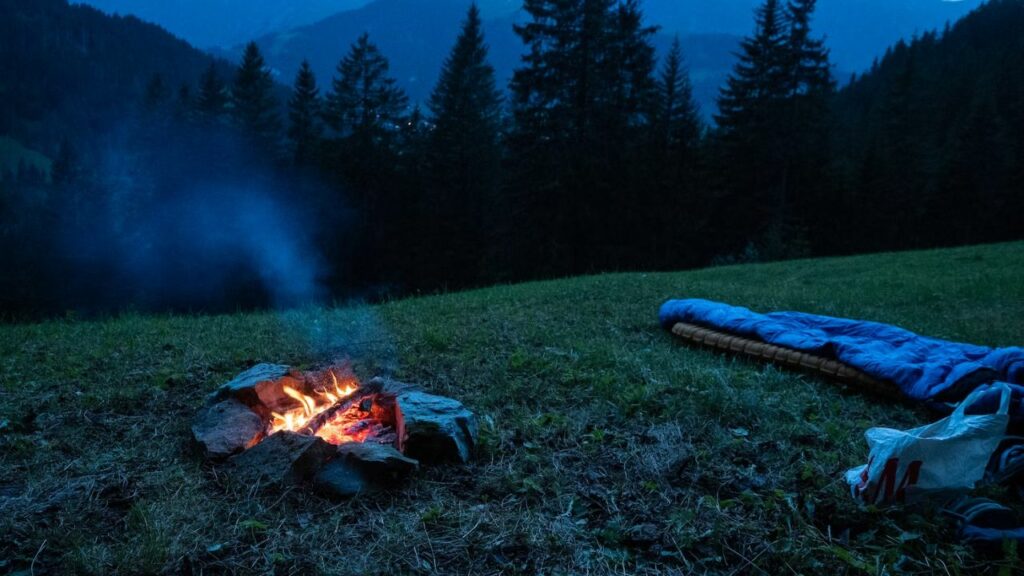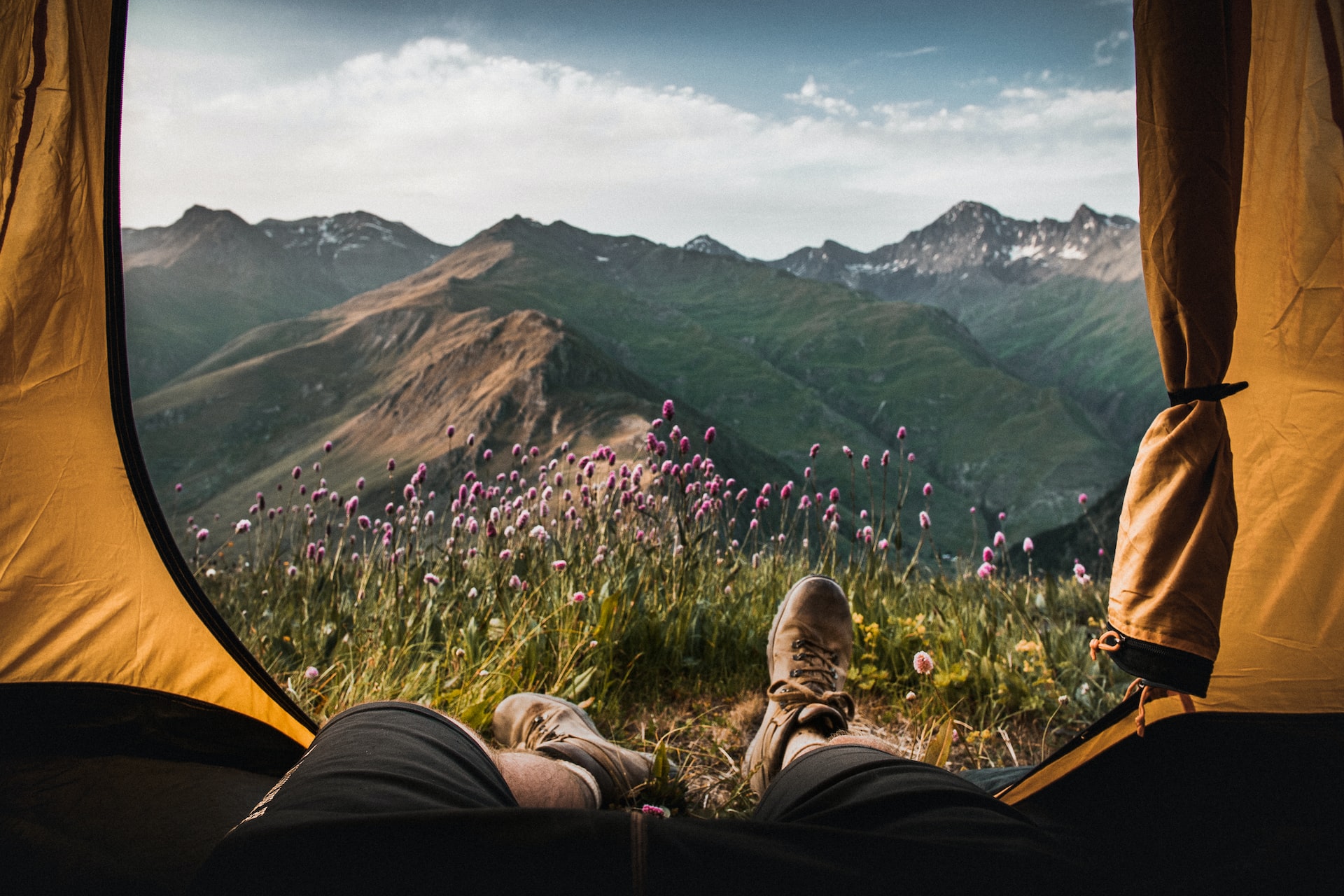Camping in the great outdoors is an amazing experience for nature lovers but also a chilly one. If you’re planning a trip soon, especially during the colder months, staying warm is gonna be super important.
Whether you’re a seasoned camper or a beginner, it’s important to be prepared with the right gear and knowledge to keep yourself warm and cozy when camping outdoors. Several factors contribute to staying warm during tent camping, including the type of sleeping bag, tent, clothing you wear and the location.
So, let’s get started.
Tip 1. Choose the Right Gear
I know I know. It’s the most obvious tip for campers. But what does “right” mean for you? To keep yourself warm, you need the right tent, sleeping bag and sleeping pad for your cold tolerance and body type.
1. Tent: A four-season tent is designed for cold weather and will provide more insulation and protection than a three-season tent. These are typically made with heavier, more durable materials and have fewer mesh panels to keep the cold air out.
When choosing a tent, look for features like a rainfly, vestibule, and guy lines to help protect against the elements.
2. Sleeping Bag: Your sleeping bag is your first line of defense against the cold. Look for one with a temperature rating suitable for the lowest temperatures you expect to encounter. You can go with a bag rated 20°F for three-season camping, and one rated 0°F or lower for winter camping.
When selecting a sleeping bag, consider the type of insulation used. Down insulation is highly compressible and lightweight, making it a popular choice for backpacking. Synthetic insulation is bulkier but still provides warmth even when wet.
Choose a bag with a hood to help trap heat around your head, and consider a mummy-style bag for additional warmth and less interior volume.

3. Sleeping Pad: Even with a warm sleeping bag and a good tent, you can lose a lot of heat through conduction from the cold ground.
When selecting a sleeping pad, look for a high R-value. An R-value of 2 or higher should be sufficient for most three-season camping, while a rating of 4 or higher may be necessary for winter camping.
Tip 2. Layer Up
Layering can help regulate your body temperature by trapping warm air close to your skin and allowing you to add or remove layers as needed.
To effectively layer up, it’s important to understand the different layers of clothing and what materials work best for each layer. The three primary layers are the base, insulation, and outer layers.
The base layer is closest to your skin and should be made of moisture-wicking fabric, such as merino wool or synthetic materials. Avoid cotton as a base layer since it retains moisture, making you feel cold.
The insulation layer is the middle layer and is responsible for keeping you warm. Fleece, down, and synthetic materials are excellent choices for insulation layers. These materials trap warm air close to your body and are breathable enough to allow moisture to escape.
The outer layer is the final layer protecting you from wind, rain, and snow. This layer should be made of waterproof and windproof material, such as Gore-Tex or a similar material.
Tip 3. Keep Your Head and Feet Warm
Pay attention to your extremities: head and feet. Your head and feet contain many blood vessels close to the surface, so heat can escape through easily.
To keep your head warm, look for a hat made from a warm, breathable material like wool or fleece. When it comes to your feet, wool socks are your best bet.

Wool is a great insulator that can keep your feet warm even when wet. Look for socks that are thick and cushioned for added comfort.
Another tip for keeping your feet warm is to use a hot water bottle or hand warmer. Before bed, fill a hot water bottle with boiling water and place it at the bottom of your sleeping bag. This can help warm your feet and keep them toasty overnight.
Tip 4. Eat Warm Foods and Stay Hydrated
It’s essential to maintain your body’s heat. Dehydration can lead to a drop in core body temperature, which can be dangerous in frigid temperatures. Also, dehydration can make it more difficult for your body to generate heat, leaving you feeling cold and uncomfortable.
In addition to staying hydrated, warm foods help raise your core body temperature. When planning your meals, focus on foods that are easy to prepare and can be cooked over a campfire or camping stove. Examples of warm, hearty meals include soups, stews, and chili.
When preparing warm meals while camping, there are a few things to remember. First, ensure you have a reliable camping stove or campfire for cooking. Second, pack food that’s easy to prepare and cook quickly. Preparing and freezing meals can also be a great way to ensure warm food is ready when needed.
Tip 5. Stay Active
When camping in cold weather, staying active is essential to keep your body warm. Physical activity generates heat and helps to keep your blood flowing, which can help to prevent hypothermia.
Here are some tips for staying active while camping:
- Take a Hike.
- Do some jumping jacks.
- Play a game.
- Collect firewood.
- Do some stretching or light yoga.
Remember to take breaks when needed, and do it sparingly. Listen to your body and adjust your level of activity as needed.
Tip 6. Create a Warm Sleeping Environment
After a long day of hiking and exploring, the last thing you want is to shiver in your tent all night long.

- Insulate Your Sleeping Pad: You can use a closed-cell foam pad or an inflatable pad with a reflective layer to help reflect heat back toward your body.
- Preheat Your Sleeping Bag: Before climbing into your sleeping bag, warm it up by stuffing it with warm clothes or a hot water bottle.
- Wear Warm Clothes to Bed: Make sure to change into clean, dry clothes before climbing into your sleeping bag.
- Ventilate Your Tent: While it may seem counterintuitive, proper ventilation is important for staying warm while camping. Ventilating your tent helps reduce condensation and prevents moisture from building up inside the tent, making you feel colder. Crack open a small window or vent at the top of your tent to allow for proper airflow.
How cold is too cold for camping?
In general, temperatures below freezing (32°F) can be too cold for camping, especially for beginners or those without proper gear. It’s essential to check weather forecasts and prepare for any cold temperatures you may encounter during your camping trip.
Of course, the threshold is different for different people. The answer to this question depends on several factors, including your personal tolerance for cold, the gear you have available, and the conditions of the camping location.
When considering how cold is too cold for camping, it’s important to remember that the temperature is just one factor to consider. Wind, humidity, and precipitation can also impact your body’s ability to regulate its temperature.
For example, a temperature of 30 degrees Fahrenheit may feel much colder if there is a strong wind or if you are wet from rain or snow.
Another factor to consider is your personal tolerance for cold. Some people are naturally more sensitive to cold temperatures than others. Additionally, age, health status, and other individual factors can impact your body’s ability to regulate its temperature.
That being said, some general guidelines can help you determine whether a particular temperature is safe for camping.
Generally, temperatures below 20 degrees Fahrenheit can be dangerous if you are not properly prepared. If you plan to camp in temperatures below freezing, it’s essential to have high-quality gear specifically designed for cold-weather camping.
Frequently Asked Questions (FAQs)
1. What is the best type of sleeping bag for cold-weather camping?
The best type of sleeping bag for cold-weather camping is a mummy-style one. It’s designed to contour your body shape and trap heat more efficiently. Look for sleeping bags with a lower temperature rating than expected to ensure warmth.
2. Can I bring a heater inside my tent?
Bringing a heater inside your tent is generally not recommended as it can be a fire hazard and cause carbon monoxide poisoning if not properly vented. Instead, focus on using insulated sleeping bags and clothing layers to keep warm.
3. How can I keep my feet warm during cold weather camping?
Wear insulated, waterproof boots and thick wool socks to keep your feet warm and dry. Avoid wearing cotton socks as they retain moisture and can lead to cold feet.
4. How can I stay warm in my tent at night?
To stay warm in your tent at night, use a quality sleeping bag or insulated sleeping pad, and wear enough layers to keep you warm. Consider using a hot water bottle or hand warmers to help warm up your sleeping bag before bed. Additionally, seal any gaps or openings in your tent to prevent drafts.

